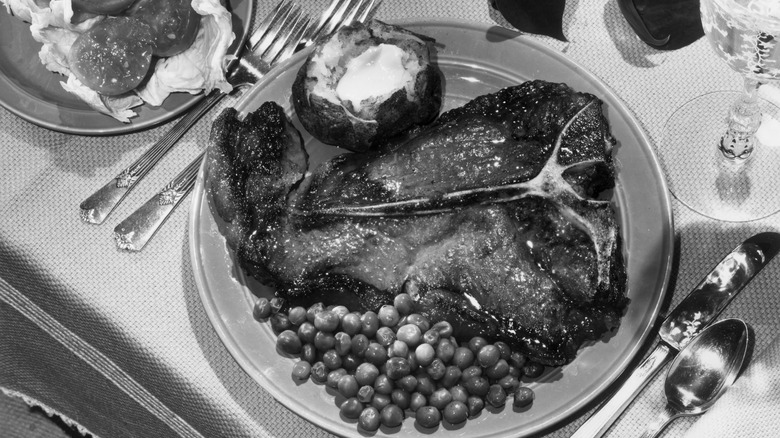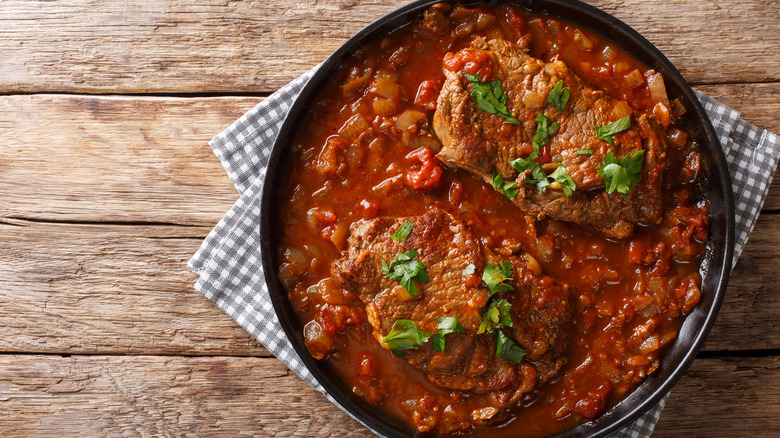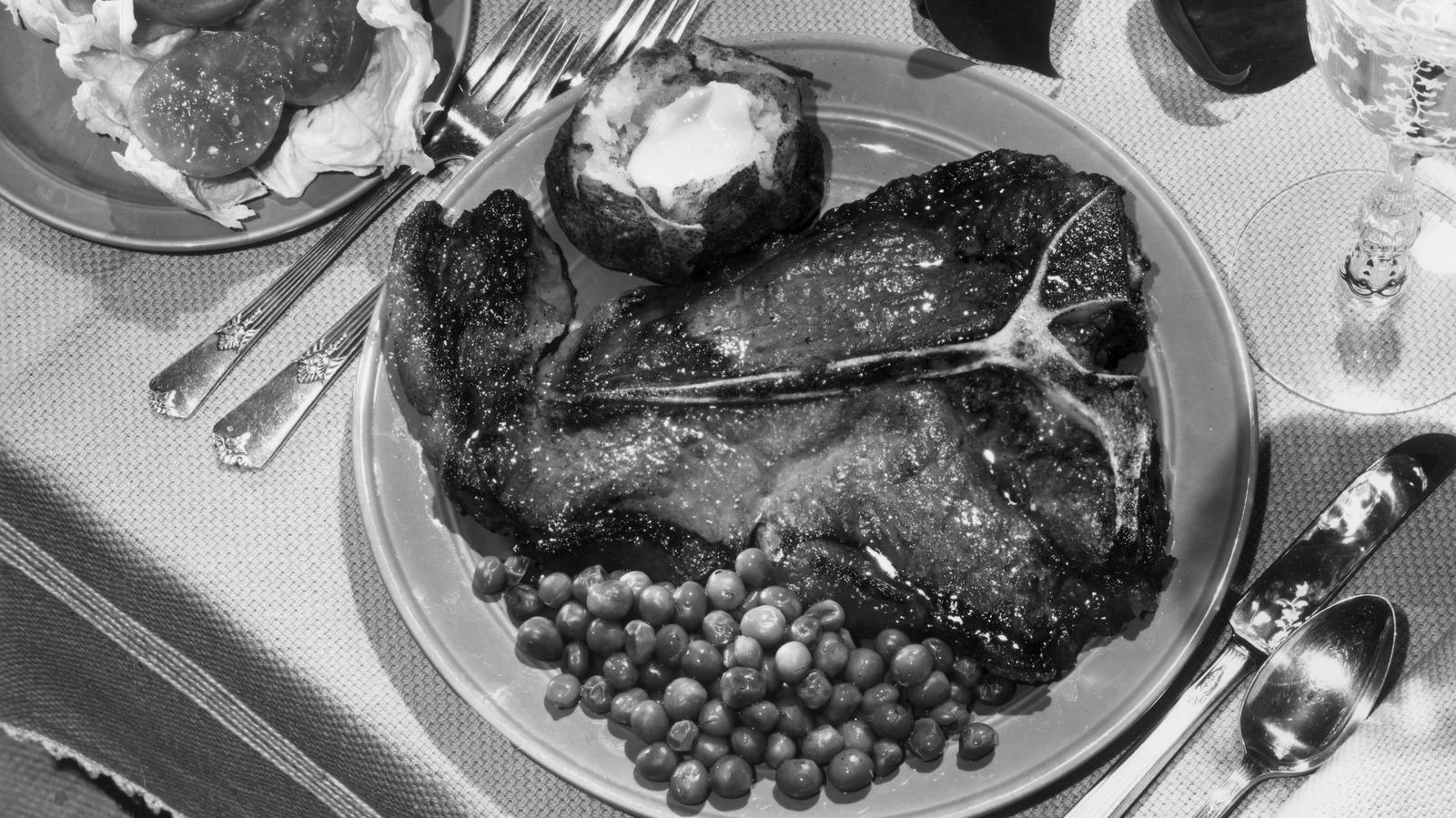
American Stock Archive/Getty Images
Vintage steak dishes are sometimes unappetizing by today's standards. They're frequently made from less-than-choice cuts and some dishes, like Salisbury steak, are not really steak at all. You might not find such recipes gracing Michelin-style restaurants anytime soon, but their merit stems more from practicality. These older recipes are often affordable and relatively easy to cook. In the '40s and '50s, one such dish was Swiss steak.
How do you make Swiss steak? Here's the good news: The best cuts of beef for Swiss steak are inexpensive as they're tenderized considerably. Round steaks work well, which brings us to the name. Swissing refers to tenderizing meat with a machine (and likely nothing to do with Switzerland). To make Swiss steak, you soften your steak with a mallet or a tenderizer until it's about half an inch thick.
Recipes vary from here. Swiss steak is typically coated with a mix of flour and spices, browned with oil, and then simmered in a tomato-based gravy. Swiss steak is served with a sauce made with some combination of vegetables like tomatoes and onions as well as beef broth and Worcester sauce. When tougher cuts of meat are pounded flat and braised, you get a lot of mileage in terms of taste and texture even when using cheaper ingredients.
What are the origins of Swiss steak?

Sergii Koval/Shutterstock
Like many older recipes, the exact origins of Swiss steak are unknown. It may have originated in Indiana as early as the late 1800s. The dish seemed to gain some traction during this time throughout Indiana and Ohio, although who invented the dish and why is murky. There were a great deal of Swiss immigrants in this area at the time, so it's possible that the name Swiss steak did indeed originally relate to Switzerland, although as much is contested. At any rate, Swiss steak was something of a local specialty at the turn of the century.
Swiss steak did not catch on nationwide until the 1940s and '50s. Reynold's Aluminum foil may have helped bring the dish to American kitchens, encouraging citizens to serve Swiss steak on foil for hassle-free cleanup. Wartime rationing may have also accelerated the Swiss steak trend. Many old-school steak dishes born during World War II were made from cheaper ingredients. Ration books encouraged Americans to stretch supplies throughout the war. Given Swiss steak uses cheaper cuts of meat and readily available ingredients, it likely fit right in with popular foods at the time.



